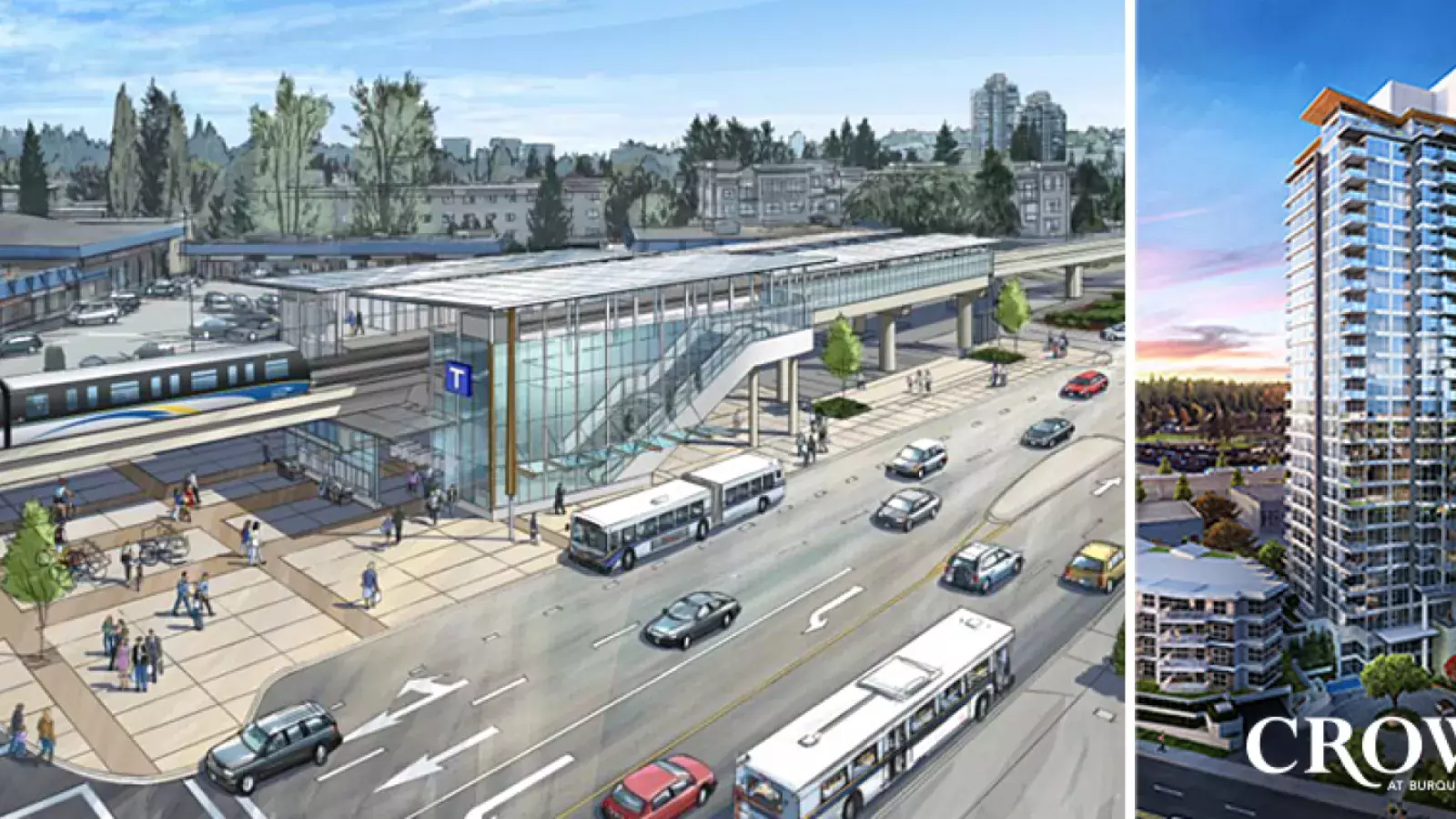A Burgeoning Transit-Oriented Village
Burquitlam is the combined name, or “portmanteau” of Burnaby and Coquitlam. Also known as West Coquitlam, this area was once a gateway neighbourhood that provided access to Port Moody from the quay at New Westminster in the mid-1800s. Since then, Burquitlam has evolved into a residential area, dense with detached single family homes that surround a commercial area with local businesses and a shopping plaza. Most recently, this junction point of two cities has become one of Metro Vancouver’s communities poised for major growth.
The process of revitalizing the neighbourhood began 12 years ago, when City Planners set the vision for Burquitlam. Their goal was to create a walkable, transit-oriented community that made the most efficient use of the land. A community was envisioned with a seamless integration between residential areas, shops, offices and public spaces surrounding the planned SkyTrain stations. Now that Metro Vancouver’s newest rapid transit network — the Evergreen Line — is under construction, a large piece of the Burquitlam revitalization plan is falling into place.
What are Transit-Oriented Communities, and why are they important?
As defined by Translink, Transit-Oriented Communities (TOCs) are areas with higher-density, mixed-use development spaces, and pedestrian friendly neighbourhoods where rapid transit nodes are within walking distance. This allows areas to be more livable, sustainable, and resilient. By design, TOCs allow people to drive less and walk, cycle, and utilize public transit more. Although there isn’t a strict formula when developing TOCs, there are ‘6 Ds’ that are considered essential to the make-up of a transit focussed village centre:
The 6 Ds of a Healthy, Sustainable Transit-Oriented Community:
- DESTINATION Well-coordinated use of land and transportation creates faster access to more destinations for more people.
- DISTANCE Creation of well-connected street networks to shorten travel distances, making it possible for people to quickly and conveniently make connections via transit.
- DESIGN Transit-oriented communities should be carefully designed with the needs of all people in mind, be it caregivers with strollers or the mobility impaired.
- DENSITY Concentrate and increase land use activities — such as home residences, shopping, and businesses — around transit hubs.
- DIVERSITY A vibrant mix of land uses helps to create complete, walkable neighbourhood \"villages\" around transit stations and stops.
- DEMAND MANAGEMENT Discourage unnecessary driving and promote walking, cycling, and transit.
Burquitlam’s new transit infrastructure will also bring greater accessibility to the neighbouring communities of Lougheed Towncentre, Coquitlam Centre and Simon Fraser University. The area has already begun to draw a melting pot of new residents and investors alike, from across Metro Vancouver and the international community. Over the coming years, some of the most reputable developers in Canada — Bosa Properties, Beedie Living, Marcon, Intracorp, and Bluesky Properties — will add over 2,000 new multi-family residential homes to Burquitlam and its adjacent areas. With three successful developments currently selling and many projects already sold out, this modern day gateway is poised to become one of the most livable neighbourhoods in the greater Vancouver area.



